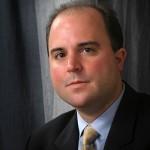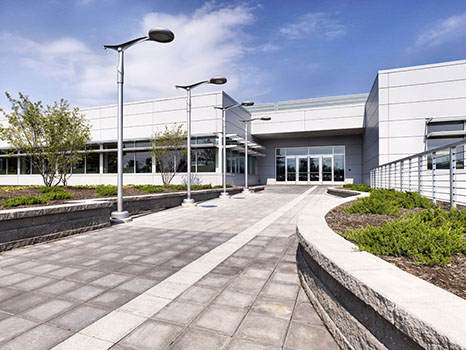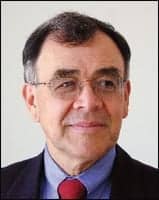Founded 100 years ago in 1915, Welch Allyn is one of the medical device industry’s pioneering companies. Still privately held and family owned, the company began with a revolutionary ophthalmoscope and retained its focus on diagnostic instruments for several decades thereafter.
Eventually, Welch Allyn expanded into a number of other clinical areas, including patient monitors, with the acquisition of Protocol Systems and its Propaq line of monitors in 2000, and cardiopulmonary products, with the purchase of Cardio Control in 2010. The company is headquartered in Skaneateles Falls, NY, and employs nearly 2,600 employees in 26 different countries.
In recognition of the company’s landmark anniversary, 24×7 spoke with Welch Allyn representatives about the company’s plans for the future and its approach to working with biomeds.
Preparing for Change
As the company begins its second century, Welch Allyn is expecting to see its products move increasingly out of healthcare facilities toward the home. This vision of a remote future for healthcare has driven two recent acquisitions: HealthInterlink last December and Hubble Telemedical in January.
According to Scott Gucciardi, senior vice president for New Healthcare Delivery Solutions at Welch Allyn, the company is preparing for the increasing decentralization of the delivery of healthcare. As the healthcare system in the United States works to control costs and improve quality outcomes, he explains, there is growing pressure to move the delivery of healthcare to lower-cost and lower-acuity settings. In other words, “You move the patients who are in the ICU down to the med surg ward of the hospital, then move the patients in the med surg ward out to postacute long-term care, then move the patients in long-term care back into the home,” he says. “Ultimately, the home is the lowest-cost place to deliver care.”
Looking at this trend, Gucciardi’s New Healthcare Delivery Solutions group, which he describes as entrepreneurial, concluded “that there are two new spaces we can enter as a company … to help meet some of these new unmet needs” in healthcare. One of these spaces was telehealth, represented by the HealthInterlink acquisition. While Welch Allyn is “a vital signs company at our core,” Gucciardi says, it recognized that vital signs are “increasingly going to be taken in the home,” a setting the company generally doesn’t serve. That led to the realization that it needed to move into telehealth.
[sidebar float=”left”]
Welch Allyn
Key Product Categories
- Physical exam
- Patient monitoring
- Blood pressure measurement
- Cardiopulmonary
- Medical lighting
[/sidebar]
With the acquisition of HealthInterlink, the company now has a software-based remote patient vital signs monitoring solution. The HealthInterlink system incorporates wireless patient monitoring devices and a mobile gateway device that transmits vital signs data to a cloud-based web portal. The acquisition represents the first step into what Welch Allyn calls mobile vital signs monitoring, or “mVSM.”
Another example of decentralization in healthcare, Gucciardi says, is “moving screening from an expensive centralized place like the specialist’s office down to the generalist’s office or primary care setting.” The company’s strategy for adapting to this change is what Gucciardi calls “digitizing our physical examination instruments.” Here, the company identified another unmet need, involving screening for diabetic retinopathy.
As Gucciardi explains, retinopathy is the leading cause of preventable blindness. Less than half of diabetic patients receive the recommended annual screening for retinopathy, either because they don’t make appointments with specialists or lack easy access to them, as in rural areas. The company took as its mission to “enable and empower the primary provider to conduct the screenings for diabetic retinopathy.”
The acquisition of Hubble Telemedical, Knoxville, Tenn, is a key step toward achieving this goal, which Welch Allyn has dubbed a “teleretinal imaging solution.” Hubble’s automated fundus camera is designed to be placed into a primary care physician’s office or a clinic. It does not require a “highly trained or skilled person to obtain the image” of the retina, Gucciardi says. The image is sent from the camera via Hubble’s software to a remote location where specialists will “over-read” the image, looking for indications of diabetic retinopathy. The specialist “does the interpretation, does a full diagnostic report and diagnosis, appropriate coding of ICD9s, and a recommended care plan for the patient.”
Gucciardi sees the company’s move into teleretinal imaging as a logical extension of Welch Allyn’s 100-year legacy. “Right from the get-go, our company was founded on the world’s first handheld direct-illuminating ophthalmoscope for examining the retina. So it’s appropriate that as we celebrate our 100th anniversary, we’re introducing a new retinal screening solution that’s intended to be sight-saving as well.”
Empowering Biomeds
It’s not surprising that over the course of its first century, Welch Allyn has developed a robust product service group in its Skaneateles Falls headquarters to which customers can send their devices for calibration and repair. But the company also aims to empower biomeds, says Kevin Paine, head of marketing for cardiopulmonary and vital signs in the United States and Canada.
In recent years, the company created a specialized service offering called the Biomed Partnership Program, part of its Partners in Care Services. “The biomed program was created to empower our biomed customers with the training and resources that they needed to maintain a fleet of various types of Welch Allyn devices in their facilities,” Paine says. “Previously, we did not have a program targeted at that audience, to really support them in what they do day-to-day. The ability for a biomed to call in and acquire parts and get training wasn’t really bundled up into a systematic package that we could offer to a facility.”
The program is based on an extended service agreement for various Welch Allyn devices, and was enhanced in 2014 with several new features. According to Paine, the plan offers a number of advantages over the standard warranties, such as speedier shipment of parts and remote diagnosis and repair of selected products. One of the notable new features, Paine says, is the addition of accessory protection.
With the Connex vital signs monitor (cVSM), for instance, “we cover the majority of the wired accessories on that device as a part of the service agreement,” Paine explains. “Accessories such as the thermometry probe, the battery on the device, in some cases a Braun ear thermometer, barcode scanners, transformers, and spO2 cables and sensors are all covered under this accessory protection entitlement.” For each device covered, each of those accessories is eligible for replacement once in a given year at no cost if it’s broken or damaged.
Another significant enhancement to the program last year was the addition of accidental damage protection, Paine says. This entitlement, only available in the biomed program, means that “a customer can claim accidental damage once per year on a given device,” Paine says, and “can either send the device back to us for repair, or we will send out the parts needed to repair that damage.”
A third notable addition to the biomed program last year involved Welch Allyn’s maintenance repair training options. The company offers three types of service and repair training: courses are held in the Skaneateles Falls headquarters, on-site at a customer’s facility, or in an online format. Paine notes that the content in the three types of training courses is “pretty much the same,” so biomeds “are not sacrificing anything by going online for the training.” And in fact, Paine says, the “vast majority” of training is done via the online option. “The online modules offer more flexibility and are very cost-effective,” he says. In addition, the online course is self-paced. Biomeds taking the course online “can stop and start anywhere along the way, and once they’ve concluded the course, they get their certification.”
While all the course options can be purchased as stand-alone products, facilities can now also earn credits via the biomed program service agreements. “Every device that’s covered under a service agreement earns [the customer] a point, and every 10 points gets an online training module for that product,” Paine says. “If a customer comes to us and has 200 cVSMs, and they want to cover all those for a year, under our biomed program, they would have 20 training sessions on the cVSM available.”
In addition, service manuals are available to all biomeds as part of the product library in Welch Allyn’s recently revamped website, regardless of whether they have service agreements. “That’s not something that we hold back or charge for,” Paine says. “It’s available as a free download directly off the website.” He adds that in the website redesign, “there was a lot of emphasis put on ease of self-service in general, whether you go through the product page or our document library.”
What Paine says about the Welch Allyn’s website usability would appear to apply to the company’s attitude toward working with biomeds overall: “We’ve tried to make it very easy.” 24×7
John Bethune is editorial director of 24×7. For more information, contact him at [email protected]






